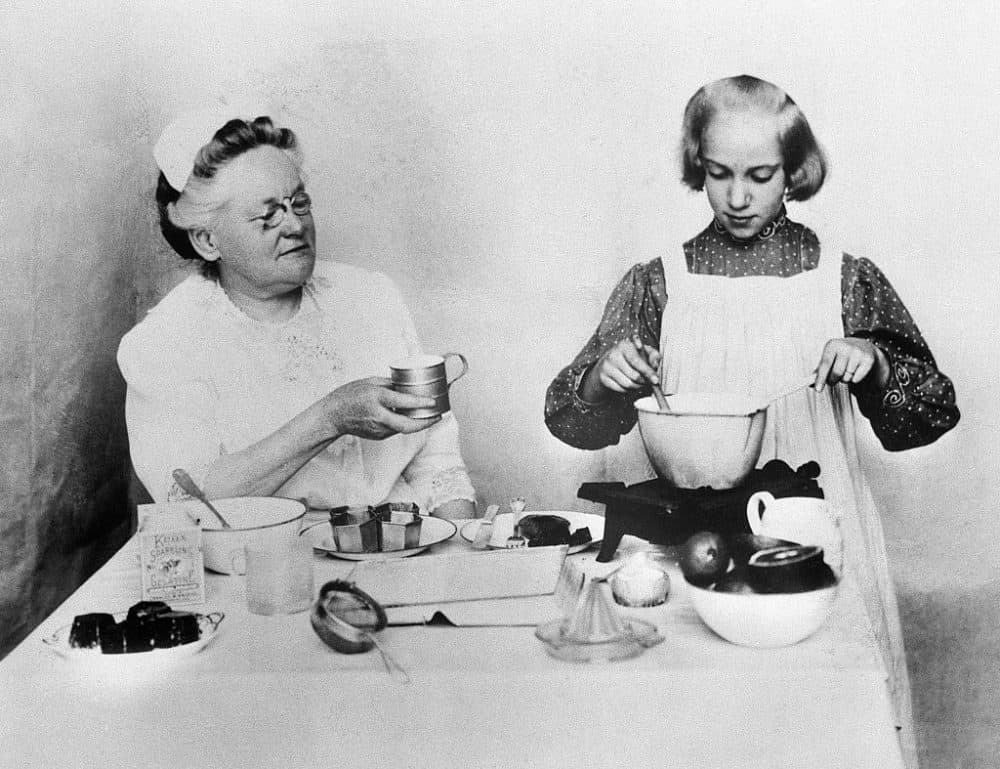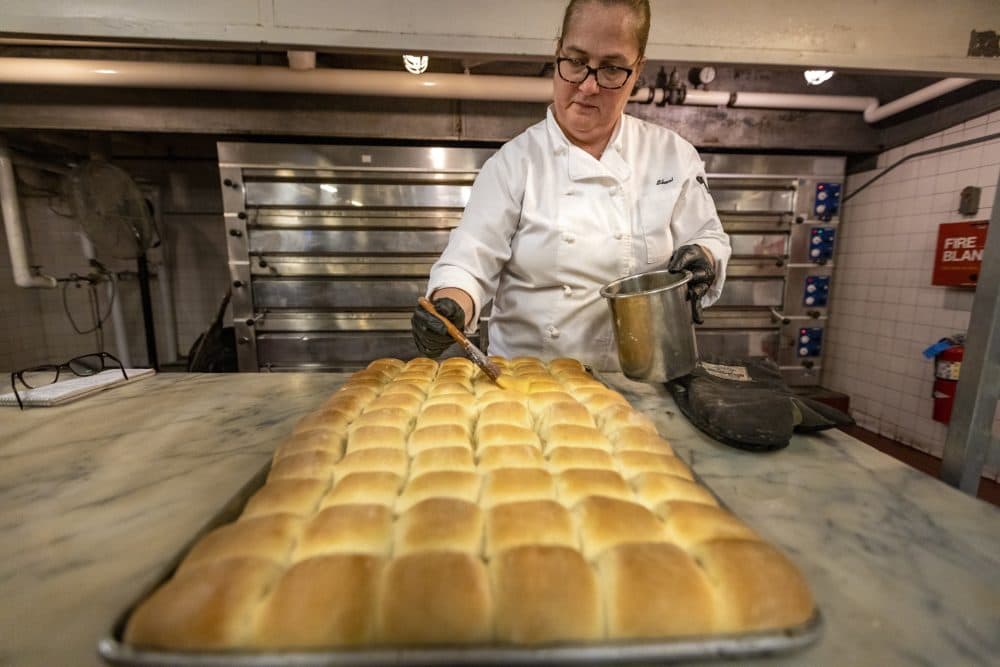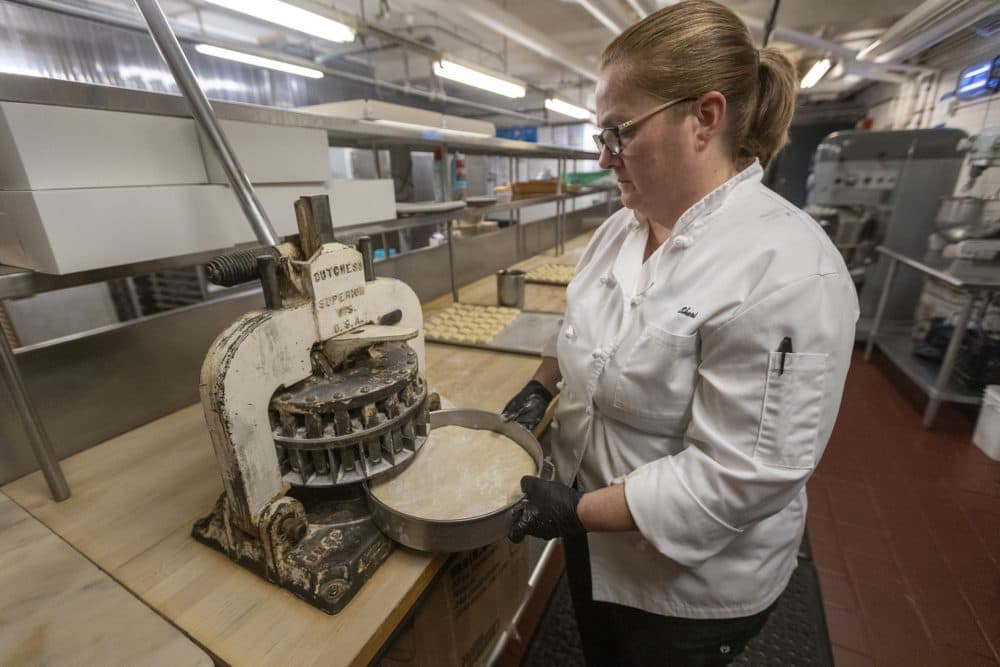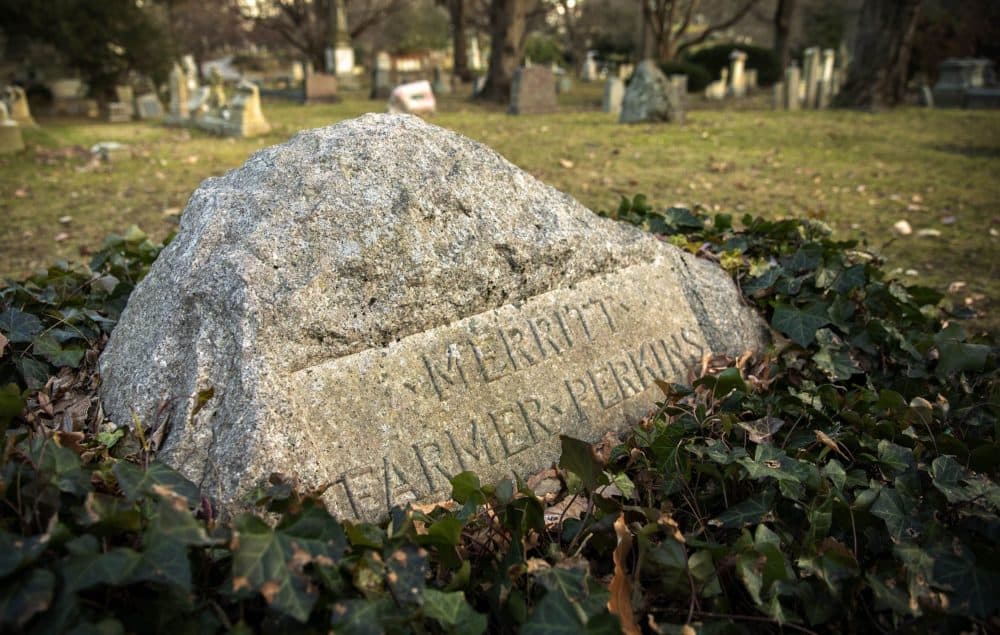Advertisement
Baking for the holidays? Here's why you should thank culinary pioneer Fannie Farmer
Resume
The holidays are here, and for many of us that means a lot of baking. Maybe you'll be reviving old family recipes or experimenting with some new ones. Either way, we all can thank a 19th century Boston-born cookbook author and domestic science pioneer for revolutionizing the way recipes are replicated at home — including the iconic Parker House rolls.
Perhaps you've heard of, tasted or even made them yourself. The melt-in-your-mouth baked good was born in the late-1800s at the Boston hotel of the same name where, today, they're still being being mixed, cut and pulled out of the oven.
“Parker House rolls get hit with butter two, often three times,” baker Sheri Weisenberger explained as she lifted a few dozen glimmering pillows off a hot tray.

Standing nearby, Omni Parker House historian Susan Wilson inhaled their intoxicating aroma. “They are puffy and they are brown, golden,” she said wistfully, “and I want to eat one now.”
Wilson shared how the culinary powerhouse Fannie Farmer must have tasted these famous rolls upstairs, in what used to be a women's-only cafe, because she ultimately figured out how to make them herself.
“It wouldn't have been a big deal, even though our recipe was secret, for her to have taken it and, what we would call today, retro-engineer it,” Wilson said.

That's because Farmer was a star student, then director, at the Boston Cooking School, which was just down the street. She included her Parker House roll recipe in a groundbreaking 1896 food preparation bible called, “The Boston Cooking-School Cookbook.”
“To me, Fannie Farmer is an iconic individual,” Wilson said. “This is more than two decades before women even have the right to vote, and she's running a cooking school and creating a book that becomes a bestseller.”
In her thick work's preface Farmer wrote:
"It is my wish that this book may not only be looked upon as a compilation of tried and tested recipes, but that it may awaken an interest through its condensed scientific knowledge which will lead to deeper thought and broader study of what to eat."
“The most amazing thing about Fannie Farmer is most people don't even know who she is,” food historian Susan Benjamin said, “and yet they're affected by what she did every single day.”
Benjamin owns True Treats, a history-based candy shop in Harper's Ferry, West Virginia. She's been researching Farmer's enduring impact and explained how before “The Boston Cooking-School Cook Book” recipes suggested a dash of this or a tea cup of that. But Farmer changed the game by introducing the concept of standardized leveled measurements.
“It sounds really simple and really obvious, but it isn't,” Benjamin said, “which was that you would have a certain measurement for an ingredient — say flour — and you put it in a very specific kind of cup, took a knife, and you leveled it. So you had a very precise and quantifiable amount of flour in your cup.”
Farmer put it this way in her tome:
"Correct measurements are absolutely necessary to insure the best results. Good judgement, with experience, has taught some to measure by sight; but the majority need definite guides."

Benjamin credits Farmer for influencing her contemporaries, as well as generations of cooks to come.
“Anyone who goes to their kitchen, takes out a measuring cup, takes out a teaspoon, follows the directions on how to use it, is doing what Fannie Farmer advocated,” she said. “And that's amazing. She's the one who created this and brought it to the world.”
But when Farmer first set out to make measuring and other fundamentals of domestic science available to more women, her publisher was skeptical. “She provided the upfront costs,” Benjamin recounted, “and she also, in the process, retained the copyright.” The book became a hit. “It was worth a fortune, and of course she became a very wealthy woman because of it,” she said.
Benjamin calls Farmer's compendium “renegade” because it applied math and science to tasks everyday women saw as drudgery. “Cooking was boring, cleaning was boring,” she explained.
Anyone who goes to their kitchen, takes out a measuring cup, takes out a teaspoon, follows the directions on how to use it, is doing what Fannie Farmer advocated.
Susan Benjamin
Along with hundreds of detailed recipes, Farmer included chemical compositions of food, tables for cooking temperatures and times, photos of useful tools, tips for reducing waste and all manner of nutrition-related data.
Farmer didn't make success in the kitchen easy, Benjamin said, but she made it possible — and way more interesting — which was part of the mission of domestic science movement.
“And this, they thought, would really empower women in every way,” Benjamin explained. “They would have access to the modern findings of math, they would have control over their money because they knew what to spend on food and have control over the household. So it really repositioned the person who was known as the housewife.”
Farmer herself never married. Benjamin marveled over how she transcended gender and ability barriers throughout her life. As a teen, Farmer suffered a paralytic stroke — likely from polio — that impaired her mobility. But she long believed in well-made food's power to heal, and in 1904 published another innovative book titled, “Food and Cookery for the Sick and Convalescent.” Benjamin said in Farmer's eyes it was her best work, and it attracted the attention of doctor Elliott P. Joslin. At the end of his life Benjamin said he thanked Farmer for inspiring his decades of research on the role of glucose in diabetes.

Just 10 days before Farmer died in 1915, Benjamin said the 57-year-old celebrity was still lecturing from her wheelchair. Her grave is at Mount Auburn Cemetery in Cambridge (where Julia Child used to make annual pilgrimages), the Fannie Farmer Cookbook (as it's best known) is still widely available, and her Parker House roll recipe can be found on food sites all over the internet.
During the holidays Benjamin hopes home cooks will remember — and even tip a cup of flour — for “the mother of level measurement.”
“Every Christmas dinner you're sitting there with Fannie Farmer,” she exclaimed. “Even the modern things that we eat today, they're still shaped by her – and the importance of bringing together a temperature in a stove and the amount of ingredients in a teaspoon.”
And, as Fannie Farmer expressed so beautifully in the preface to her beloved cookbook:
"But for life the universe were nothing; and all that has life requires nourishment."
This segment aired on December 22, 2021.
